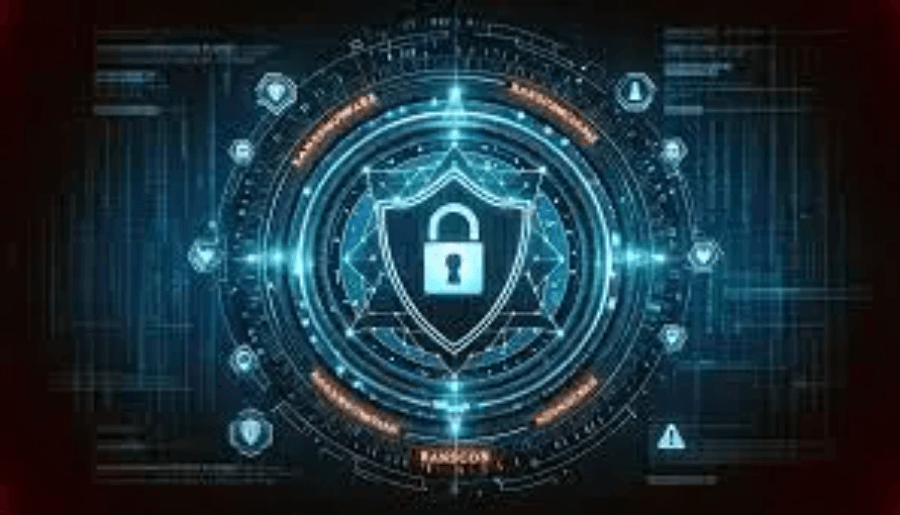Shield Up: A Comprehensive Guide to Protecting Your Business from Ransomware Attacks
Ransomware. It’s a word that chills the blood of business owners everywhere. These malicious attacks, where cybercriminals encrypt your crucial data and demand a ransom for its safe return, are becoming increasingly sophisticated and, alarmingly, prevalent. Protecting your business from ransomware is no longer a matter of “if” but “when” and requires a robust, multi-layered approach. This comprehensive guide will equip you with the in-depth knowledge and actionable strategies you need to build an impenetrable defense and safeguard your organization against these potentially devastating attacks.
Understanding the Evolving Ransomware Threat Landscape:
Ransomware attacks aren’t just a nuisance; they can cripple businesses of all sizes, from small startups to large enterprises. The fallout can include significant financial losses, irreparable reputational damage, operational disruptions that bring business to a standstill, and even legal ramifications. A thorough understanding of how ransomware operates is the bedrock of building a strong and adaptable defense.
- Deconstructing the Attack: How Ransomware Works: Ransomware typically infiltrates a system through a variety of vectors. Phishing emails, disguised as legitimate correspondence, are a common entry point. Malicious websites, often compromised or designed to mimic trusted sites, can also deliver the payload. Software vulnerabilities, unpatched security holes in applications or operating systems, provide another avenue for infection. Once inside, the ransomware often operates discreetly, spreading laterally across the network before encrypting critical data, rendering it inaccessible. Attackers then demand a ransom payment, frequently in cryptocurrency for its perceived anonymity, in exchange for the decryption key. The pressure to pay is immense, as businesses face the agonizing choice between losing valuable data and potentially funding further criminal activity.
- The Diverse Arsenal: Types of Ransomware: The ransomware landscape is diverse, with different strains employing various tactics. File-encrypting ransomware is the most common, encrypting files and demanding payment for their restoration. Locker ransomware takes a more direct approach, locking users out of their devices entirely. A particularly insidious variant is double extortion ransomware, which combines file encryption with data exfiltration. Attackers not only encrypt the data but also steal copies, threatening to publish sensitive information publicly if the ransom is not paid. This adds another layer of pressure and increases the likelihood of payment. Understanding these different types is key to tailoring your defenses.
Prevention Strategies: Building an Impenetrable First Line of Defense:
Prevention is always better than cure, and this holds especially true for ransomware. A proactive, multi-layered approach is essential to minimize the risk of infection.
- Human Firewall: Employee Training and Awareness: Your employees are often the first line of defense, and their awareness is paramount. Regular, engaging training programs should educate them about the dangers of phishing emails, suspicious links, and social engineering tactics. Simulated phishing attacks can be a valuable tool to test their vigilance and reinforce best practices. Creating a culture of cybersecurity awareness is crucial.
- Fort Knox of the Digital Age: Strong Passwords and Multi-Factor Authentication (MFA): Weak passwords are a welcome mat for cybercriminals. Enforce strong password policies, requiring complex passwords that are regularly changed. Implement MFA for all critical accounts. MFA adds an extra layer of security, requiring a second form of verification, such as a code from a mobile app or a biometric scan, making it significantly harder for attackers to gain access even if a password is compromised.
- The Shield of Updates: Software Updates: Outdated software is a major vulnerability. Keep all your software, including operating systems, applications, and security software, meticulously up to date. Software updates often contain crucial security patches that address known vulnerabilities, closing the doors that ransomware can exploit. Enable automatic updates whenever possible to ensure timely patching.
- The Gatekeeper: Firewall and Antivirus Protection: A robust firewall acts as a gatekeeper, controlling network traffic and blocking unauthorized access. Install and maintain a reliable antivirus and anti-malware solution on all devices connected to your network. These tools can detect and quarantine malicious software before it can cause damage.
- The Indispensable Backup: Regular Data Backups: Regular, comprehensive data backups are your ultimate safety net. Back up your data frequently to a secure, offsite location or cloud storage. This ensures that you can restore your data even if it’s encrypted by ransomware. Crucially, regularly test your backups to ensure they are working correctly. A backup that doesn’t work is no backup at all.
- Divide and Conquer: Network Segmentation: Segment your network to isolate critical systems and limit the spread of ransomware in case of an attack. By dividing your network into smaller, isolated segments, you can contain the damage and prevent the ransomware from spreading to your most sensitive data.
- The First Line of Communication Defense: Email Security: Email is a primary attack vector for ransomware. Implement strong email security measures, such as spam filters, anti-phishing tools, and email sandboxing, to prevent malicious emails from reaching your employees.
- Proactive Defense: Vulnerability Management: Regularly scan your systems for vulnerabilities and patch them promptly. Vulnerability scanning tools can identify security weaknesses in your software and hardware, allowing you to address them before they can be exploited by attackers.
Detection and Response: Acting Quickly When an Attack Occurs:
Even with the best prevention measures in place, it’s possible for a ransomware attack to slip through. A swift and effective response is crucial to minimize the damage.
- Constant Vigilance: Monitor Your Network: Implement network monitoring tools to detect suspicious activity and potential ransomware infections. These tools can alert you to unusual network traffic patterns, suspicious file activity, and other indicators of compromise.
- The Playbook: Incident Response Plan: Develop a comprehensive incident response plan that outlines the steps to take in the event of a 1 ransomware attack. This plan should include procedures for isolating infected systems, communicating with stakeholders, restoring data, and working with law enforcement. Regularly review and update your incident response plan to ensure it’s up to date and effective.
- Containment: Isolate Infected Systems: If you suspect a ransomware infection, immediately isolate the affected systems from the network to prevent further spread. This is critical to containing the damage and preventing the ransomware from encrypting more of your data.
Recovery Strategies: Restoring Your Business Operations:
After a ransomware attack, your priority is to restore your business operations as quickly and efficiently as possible.
- The Backup Lifeline: Restore from Backups: If you have regular, tested backups, restore your data from a clean backup. This is the most reliable way to recover from a ransomware attack without paying the ransom.
- The Risky Gamble: Negotiate with Attackers (Last Resort): In some cases, businesses may choose to negotiate with the attackers. However, this is a risky option, and there is no guarantee that you will get your data back even if you pay the ransom. Law enforcement agencies generally advise against paying ransoms, as this can encourage further criminal activity.
- Financial Safety Net: Cyber Insurance: Consider cyber insurance to help cover the costs associated with a ransomware attack, such as data recovery, legal fees, business interruption, and ransom payments (if you choose to negotiate).
Staying Ahead of the Curve: The Evolving Threat Landscape:
The ransomware landscape is constantly evolving, with attackers developing new techniques and tactics. Staying informed about the latest threats and best practices is crucial for maintaining a strong defense. Follow cybersecurity news and resources, attend industry conferences, and subscribe to threat intelligence feeds to stay ahead of the curve.
The Importance of a Proactive and Multi-Layered Approach:
Protecting your business from ransomware requires a proactive and multi-layered approach. By implementing the strategies outlined in this guide, you can significantly reduce your risk and safeguard your valuable data. Remember, prevention is key, but a robust incident response plan is also essential for minimizing the damage in the event of an attack.
Call to Action:
What’s one step you will take today to strengthen your business’s ransomware defenses? Share your commitment in the comments below!


